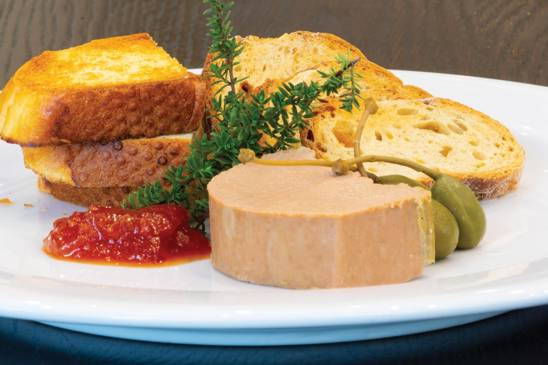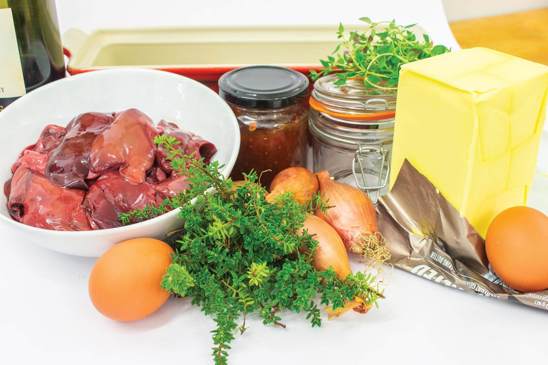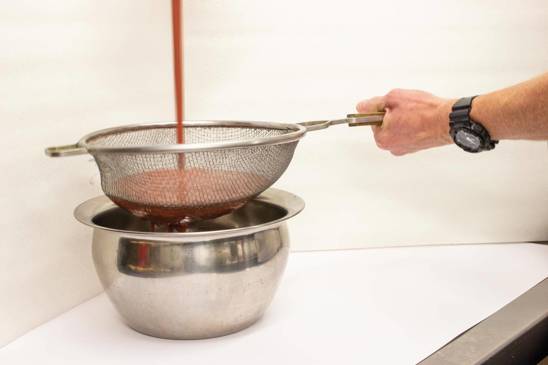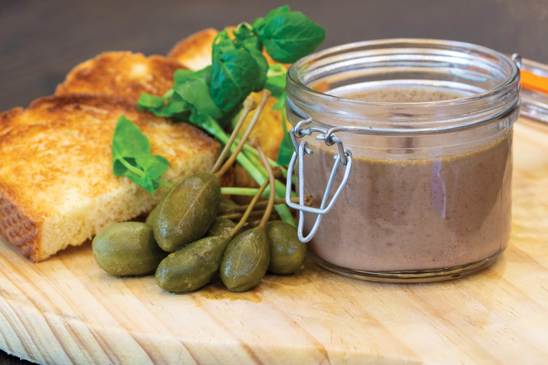This has to be one of the most popular menu items here at Christchurch Casino. And with spring goose on the hunting radar, what better time to share the recipe with you?
This parfait will be a treat at any function you are hosting. The beauty of it is that it can be frozen and once defrosted, it will taste just the same as when you first made it.
Parfait is not to be confused with ‘foie gras’. Foie gras (directly translated as ‘fat liver’) is seen as a luxury item which involves the force feeding of a mature duck or goose large quantities of corn so that its liver becomes enlarged. It is still common practice in France today but it’s not allowed in NZ. Foie gras is a fantastic culinary item but the only way you will have it here is from a tin.
Pate or parfait? A pate can be made from any liver and is a little coarser than a parfait. The goose liver parfait that we are making here is smooth and rich in taste.
Ingredients
300ml port or red wine
1 small onion or shallot, finely chopped
5 sprigs of thyme
500g goose liver, cleaned and trimmed of any damage, pellets removed and at room temperature
5 egg yolks at room temperature
500g clarified butter, melted and heated to 45-50°C
Salt
Method
Boil port or red wine, shallots and thyme. Reduce by half and then strain, keeping the liquid. Place the livers in a food processor or hand blender and blitz until smooth. Add the egg yolks and reduction to the livers and blend. Slowly add the melted butter to the livers and blend at a medium speed. If the mixture looks split or curdled, the liver is too cold and/or the butter is too cool.
Pass the mixture through a sieve and then season with salt. Line a terrine, a bread tin or loaf-shaped mould with cling film and then pour your mixture in. You could also use individual ramekins or small preserving jars. Gently fold the cling film over the top of the mixture. Place the mould into a roasting dish and fill with water halfway up the mould.
Bake in an oven at 100°C for approximately 20 minutes or until the internal temperature of the parfait reaches 70°C. The cooking time will vary depending on which mould you have used. As long as fifty minutes may be required for bigger moulds – the internal temperature is the key.
Food safety guidelines recommend an internal temperature of:
- 65°C held for 15 minutes
- 70°C held for 3 minutes
- 75°C held for 30 seconds.
I recommend 70°C as the parfait will continue to hold this temperature while it cools. If the mixture is overcooked, it will be brown and possibly grainy.
Remove the mould from the water and allow to cool, then refrigerate overnight.




